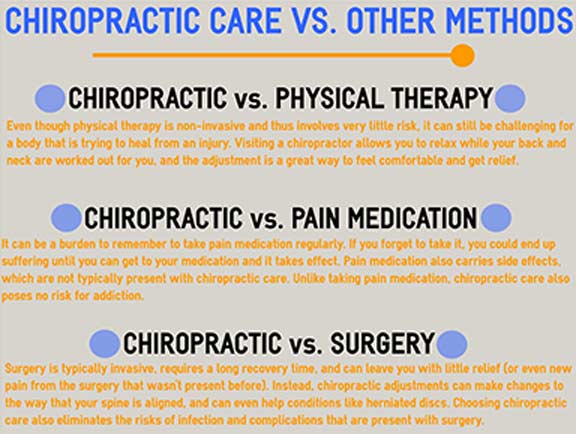Mitigate Neck And Back Pain By Analyzing The Day-To-Day Tasks That Could Be Adding Aspects; Even Small Adjustments Can Assist You Achieve A Life Without Discomfort
Mitigate Neck And Back Pain By Analyzing The Day-To-Day Tasks That Could Be Adding Aspects; Even Small Adjustments Can Assist You Achieve A Life Without Discomfort
Blog Article
Material Writer-Briggs Vogel
Preserving appropriate stance and avoiding typical risks in everyday activities can substantially affect your back health and wellness. From exactly how you rest at your workdesk to how you lift heavy things, small changes can make a large difference. Picture a day without the nagging pain in the back that impedes your every step; the remedy could be simpler than you believe. By making a couple of tweaks to your daily practices, you could be on your means to a pain-free existence.
Poor Pose and Sedentary Way Of Living
Poor pose and an inactive way of life are two significant contributors to back pain. When you slouch or suspicion over while sitting or standing, you put unnecessary stress on your back muscle mass and spinal column. This can cause muscle discrepancies, tension, and at some point, persistent neck and back pain. In addition, sitting for long periods without breaks or physical activity can weaken your back muscle mass and result in tightness and pain.
To deal with poor pose, make a mindful effort to rest and stand up right with your shoulders back and lined up with your ears. Remember to keep your feet flat on the ground and prevent crossing your legs for prolonged durations.
Incorporating routine stretching and strengthening exercises into your everyday regimen can also help enhance your pose and alleviate neck and back pain related to a sedentary way of living.
Incorrect Training Techniques
Inappropriate lifting techniques can dramatically contribute to neck and back pain and injuries. When simply click the next internet page raise hefty items, remember to bend your knees and use your legs to lift, as opposed to relying upon your back muscle mass. Stay clear of twisting your body while lifting and keep the item near your body to minimize pressure on your back. It's crucial to keep a straight back and stay clear of rounding your shoulders while raising to prevent unneeded stress on your back.
Constantly examine the weight of the item prior to raising it. If it's as well hefty, ask for assistance or usage devices like a dolly or cart to move it safely.
Bear in mind to take breaks during raising tasks to give your back muscular tissues a chance to rest and stop overexertion. By applying correct lifting methods, you can stop pain in the back and lower the risk of injuries, ensuring your back stays healthy and balanced and solid for the long-term.
Absence of Routine Exercise and Extending
An inactive way of life devoid of normal workout and stretching can substantially add to back pain and pain. When you don't engage in physical activity, your muscular tissues end up being weak and stringent, leading to inadequate posture and boosted pressure on your back. Regular workout assists strengthen the muscles that sustain your spinal column, boosting stability and decreasing the risk of pain in the back. Integrating extending into your regimen can also enhance versatility, stopping rigidity and pain in your back muscle mass.
To avoid back pain triggered by a lack of exercise and stretching, aim for at least 30 minutes of modest exercise most days of the week. Consist of workouts that target your core muscle mass, as a solid core can help reduce pressure on your back.
Furthermore, take breaks to extend and relocate throughout the day, especially if you have a desk job. Basic stretches like touching your toes or doing shoulder rolls can help ease stress and protect against back pain. Focusing on mouse click the following web site and stretching can go a long way in preserving a healthy and balanced back and lowering discomfort.
Verdict
So, keep in mind to sit up straight, lift with your legs, and remain active to avoid pain in the back. By making easy changes to your day-to-day practices, you can avoid the discomfort and constraints that come with pain in the back. Take care of your back and muscular tissues by practicing great posture, appropriate lifting strategies, and normal workout. Your back will certainly thank you for it!
